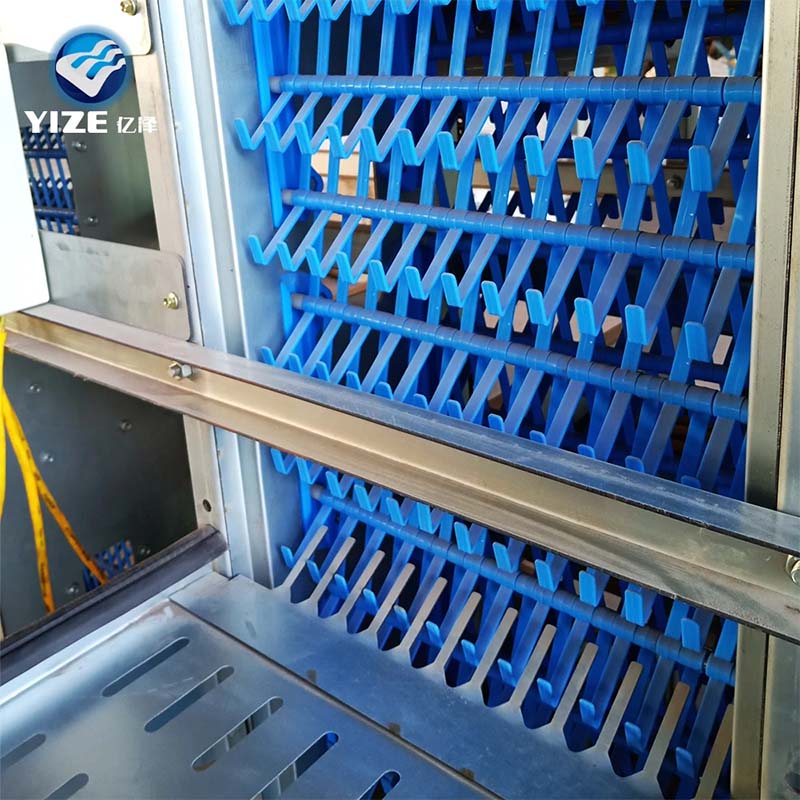Benefits of Using Cellulose Evaporative Cooling Pads for Efficient Temperature Control
Dec . 07, 2024 09:31 Back to list
Benefits of Using Cellulose Evaporative Cooling Pads for Efficient Temperature Control
The Benefits of Cellulose Evaporative Cooling Pads
As climate change continues to lead to rising global temperatures, the demand for energy-efficient cooling solutions has become more pressing. Among the various options available, cellulose evaporative cooling pads have emerged as a popular choice due to their efficient heat management and environmental benefits. In this article, we will explore the advantages of cellulose evaporative cooling pads, their applications, and how they can contribute to a more sustainable future.
What Are Cellulose Evaporative Cooling Pads?
Cellulose evaporative cooling pads are a type of material used in evaporative cooling systems. They are made from cellulose, a natural polymer found in plant cell walls, which is treated and formed into large sheets. These pads are designed to maximize the evaporation of water, which in turn cools the air that passes through them. When warm air enters the cooling system, it is drawn through the moist cellulose pads. As the water evaporates, it absorbs heat from the air, resulting in cooler air being released into the environment.
Energy Efficiency
One of the standout features of cellulose evaporative cooling pads is their energy efficiency. Traditional air conditioning units often rely on refrigerants and significant amounts of electricity to cool spaces. In contrast, evaporative cooling pads utilize the natural process of evaporation, which requires far less energy. As a result, they can significantly reduce electricity consumption during the hot summer months. This can lead to substantial cost savings on energy bills while also decreasing the overall environmental footprint.
Cost-Effective Cooling Solution
Not only are cellulose evaporative cooling pads energy efficient, but they are also a cost-effective solution for cooling needs. The initial investment for installing an evaporative cooling system with cellulose pads is generally lower than that of traditional air conditioning systems. Moreover, their maintenance costs are often lower, as they require minimal upkeep and have a longer lifespan when properly cared for. This combination of low initial costs and ongoing savings makes cellulose pads an attractive option for both residential and commercial properties.
cellulose evaporative cooling pad

Environmental Benefits
Using cellulose evaporative cooling pads contributes to environmental sustainability in multiple ways. Firstly, they are made from natural and renewable materials, making them a much greener alternative to synthetic cooling pads. The production of cellulose pads is usually less energy-intensive and involves fewer harmful chemicals than traditional cooling materials, thus reducing their environmental impact.
Additionally, because evaporative cooling relies on the natural process of water evaporation, it helps create a cooler microclimate in the vicinity. This can be particularly beneficial in urban areas, where heat islands can exacerbate the effects of global warming. By promoting evaporative cooling, we can enhance air quality and lower temperatures in densely populated regions.
Applications of Cellulose Evaporative Cooling Pads
Cellulose evaporative cooling pads have a range of applications across different industries. They are commonly used in residential cooling systems, particularly in dry climates where humidity is low, allowing for maximum evaporation efficiency. Additionally, these pads are frequently employed in commercial and agricultural settings, such as greenhouses, poultry farms, and livestock building, where maintaining cooler temperatures is crucial for product quality and animal welfare.
In industrial settings, cellulose pads can also be utilized in HVAC systems to improve air quality while reducing energy consumption, making them an excellent choice for businesses looking to enhance sustainability efforts.
Conclusion
In conclusion, cellulose evaporative cooling pads offer an effective, energy-efficient, and environmentally friendly solution to combat rising temperatures and climate change. Their benefits extend beyond mere cooling; they represent a practical choice for promoting sustainability in our daily lives. As individuals and businesses seek strategies to reduce their carbon footprint and energy costs, embracing technologies like cellulose evaporative cooling is essential. As awareness grows and innovation in this area continues, we can look forward to a cooler, greener future for generations to come.
-
Hot Sale 24 & 18 Door Rabbit Cages - Premium Breeding Solutions
NewsJul.25,2025
-
Automatic Feeding Line System Pan Feeder Nipple Drinker - Anping County Yize Metal Products Co., Ltd.
NewsJul.21,2025
-
Automatic Feeding Line System Pan Feeder Nipple Drinker - Anping County Yize Metal Products Co., Ltd.
NewsJul.21,2025
-
Automatic Feeding Line System - Anping Yize | Precision & Nipple
NewsJul.21,2025
-
Automatic Feeding Line System - Anping Yize | Precision & Nipple
NewsJul.21,2025
-
Automatic Feeding Line System-Anping County Yize Metal Products Co., Ltd.|Efficient Feed Distribution&Customized Animal Farming Solutions
NewsJul.21,2025






